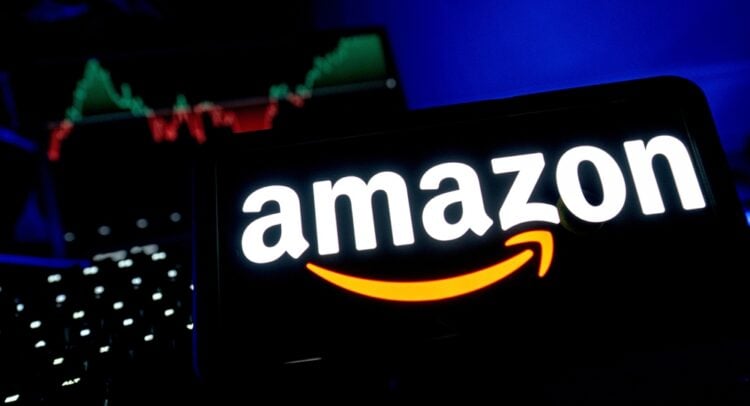Generative-AI’s emergence has redirected computing demand away from CPUs toward GPUs and ASICs (application-specific integrated circuits), which are more capable of handling training and inference tasks.
Elevate Your Investing Strategy:
- Take advantage of TipRanks Premium at 50% off! Unlock powerful investing tools, advanced data, and expert analyst insights to help you invest with confidence.
This, says KeyBanc analyst Justin Patterson, has “elevated the debate” about how the shift affects Amazon (NASDAQ:AMZN) AWS’s position as an industry leader. “More specifically,” Patterson went on to say, “we believe AWS is viewed as a laggard in managing gen-AI workloads while its competitors are taking market share.”
Patterson’s take is that AWS’s perceived loss of market share is partly due to industry-wide bottlenecks like power and capacity, which hit its large, high-capacity operations harder. Despite this, AWS continues to grow by “absolute revenue dollars” near or above competitor levels, and initiatives like gigawatt-scale data centers (Project Rainier) and partnerships with customers such as Anthropic could boost revenue further in 2026. “In short,” the analyst adds, “we would be surprised if AWS was left behind in the AI revolution.”
Patterson concedes he could be wrong about this due to companies like Anthropic pursuing multi-cloud strategies – it has worked with Google Cloud since 2023 and could be signing a new deal – which, if widely adopted, could shift “market share dynamics.” Additionally, debate continues over how Amazon’s Trainium chips compare to GPUs or Google’s TPUs. While AWS emphasizes choice by offering both GPUs and ASICs, Patterson thinks limited adoption of Trainium could raise questions about the effectiveness of its AI strategy.
That’s one key debate, and another one centers around the potential impact of the off-platform advertising strategy. Amazon DSP allows brands to run ads both on and off its platforms, including CTV, audio, and display. While Amazon mainly earns from ads on its own platforms – Amazon.com, Prime Video, and Twitch – it has recently expanded third-party advertising partnerships. This has led to discussion about the size of the off-platform opportunity and its potential impact on overall advertising growth.
Patterson’s view here is that off-platform advertising is an “evolution” of Google’s approach, with most revenue still coming from first-party channels. Amazon’s advantage lies in its unique data access, positioning off-platform ads as an “incremental contributor to advertising growth,” while Amazon.com sponsored listings and Prime Video remain the primary revenue sources.
Looking at the potential negatives, the key issue is scale; Patterson finds it unlikely that Amazon’s third-party advertising will surpass revenue from its owned platforms. Weak growth could result from the DSP failing to gain traction beyond e-commerce brands or Amazon allocating fewer resources to this business over time.
The last key debate revolves around how much the grocery business will drive North America growth. Patterson sees Amazon and Walmart gaining share as smaller, less tech-enabled grocers lose ground. By the end of the year, Amazon will have expanded same-day perishables delivery from 1,000 to over 2,300 U.S. cities, while Walmart targets reaching 95% of households within three hours. Amazon’s recent grocery investments are likely to generate incremental industry share gains. Grocery is critical – eight of the top 10 U.S. retailers offer it – highlighting its importance. Since launching in 2011, Amazon’s grocery offerings have evolved to include Amazon.com, Whole Foods, Amazon Fresh, and partnerships, with e-commerce grocery and delivery continuing to grow in significance.
So, what does all this ultimately mean for investors? After considering all the above, Patterson resumed coverage of AMZN stock with an Overweight (i.e., Buy) rating backed by a $300 price target. This figure factors in a one-year gain of 36%. (To watch Patterson’s track record, click here)
Amazon gets the backing of every analyst to have reviewed its prospects over the past 3 months. The 41 Buys naturally all add up to a Strong Buy consensus rating. The forecast calls for 12-month returns of 22%, considering the average target clocks in at $269.03. (See Amazon stock forecast)

To find good ideas for stocks trading at attractive valuations, visit TipRanks’ Best Stocks to Buy, a tool that unites all of TipRanks’ equity insights.
Disclaimer: The opinions expressed in this article are solely those of the featured analyst. The content is intended to be used for informational purposes only. It is very important to do your own analysis before making any investment.
















